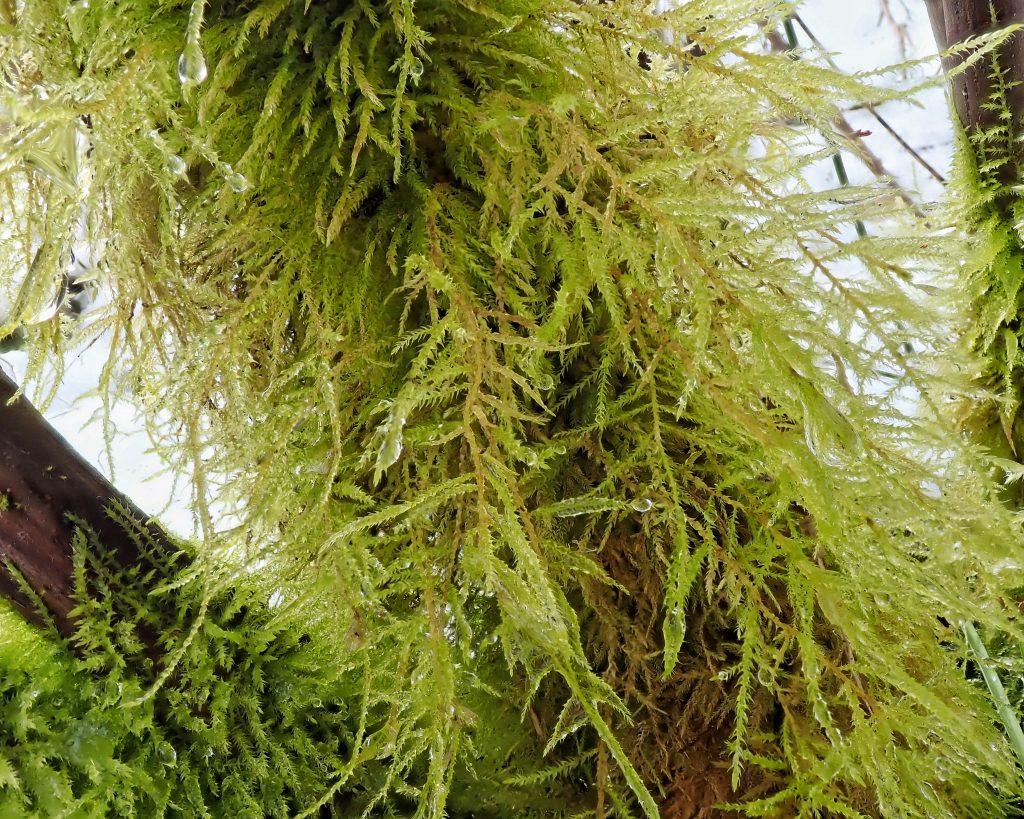
A couple years ago, on one of my first moss walks, the leader pointed out a moss and said it was Kindbergia praelonga and said you could always tell it apart from K. oregana because it was blah, blah blah, blah, and smaller and splindlier. I really wish I’d taken notes, because my lack of remembering those other traits has led to me calling most feather mosses that aren’t very large Kindbergia praelonga. Thus my initial mistake with the Hypnum subimponens.
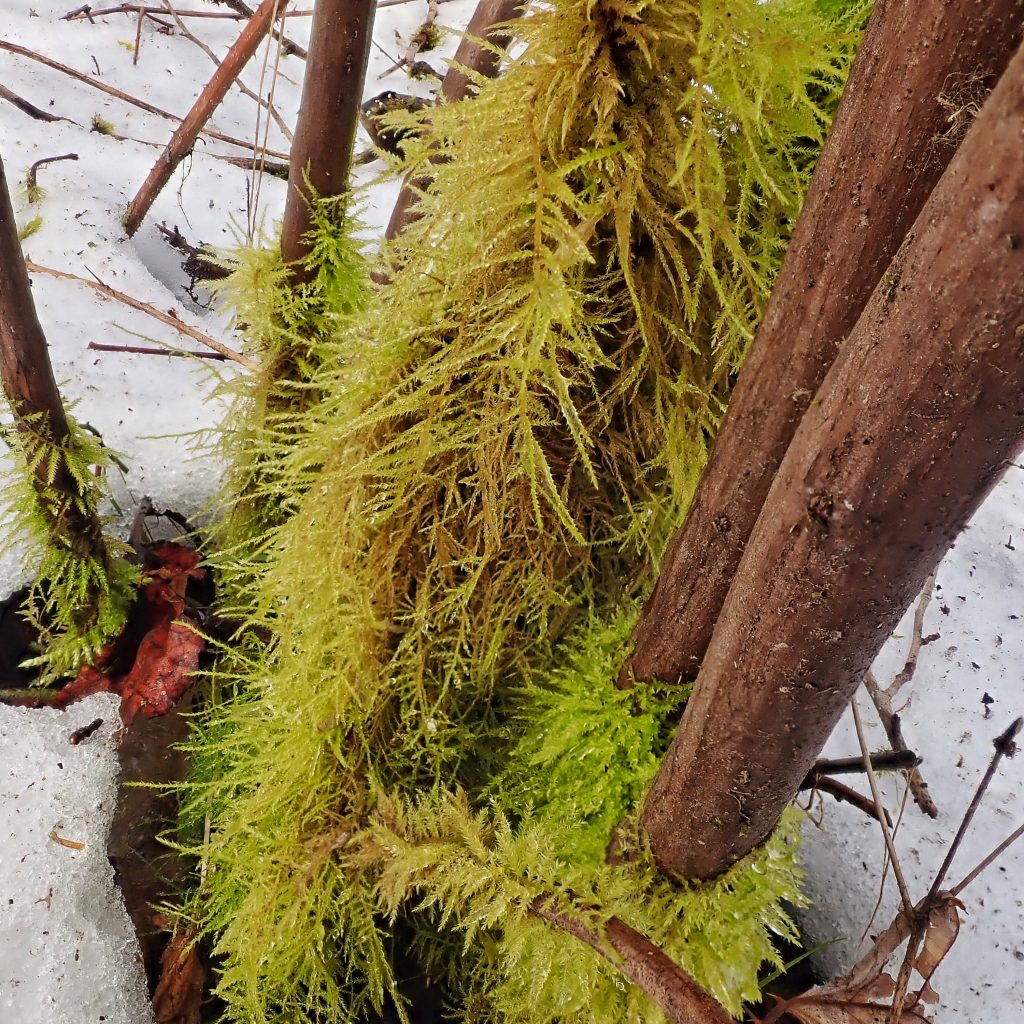
Two years later I’m only now starting to truly understand how superficially similar many mosses can be, and how closely one needs to look to see the differences. But looking closely is so rewarding! It’s like a secret, overgrown trail to a part of the world few ever see.
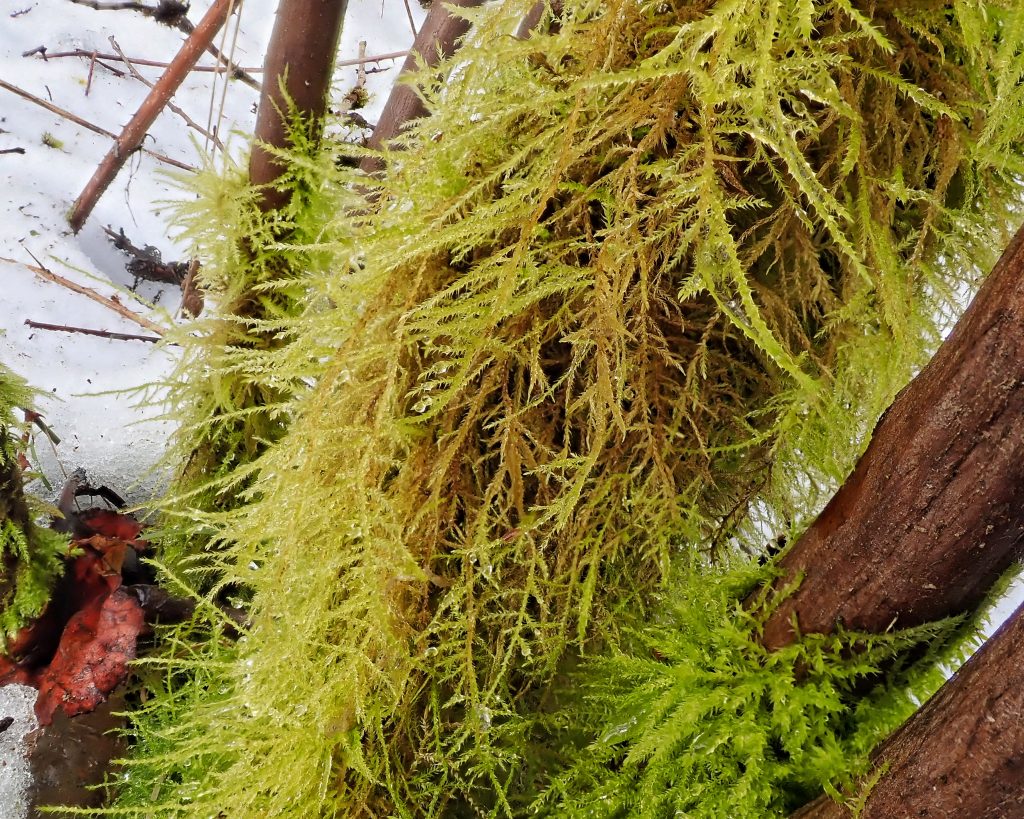
I was a little surprised that the habitat descriptions I found for this species said it was only occasionally epiphytic, since the location (Sandy River Delta in Multnomah County, Oregon) where I found the moss in these photos had large clumps of it around the base of almost every sapling growing along the route we took to the river.
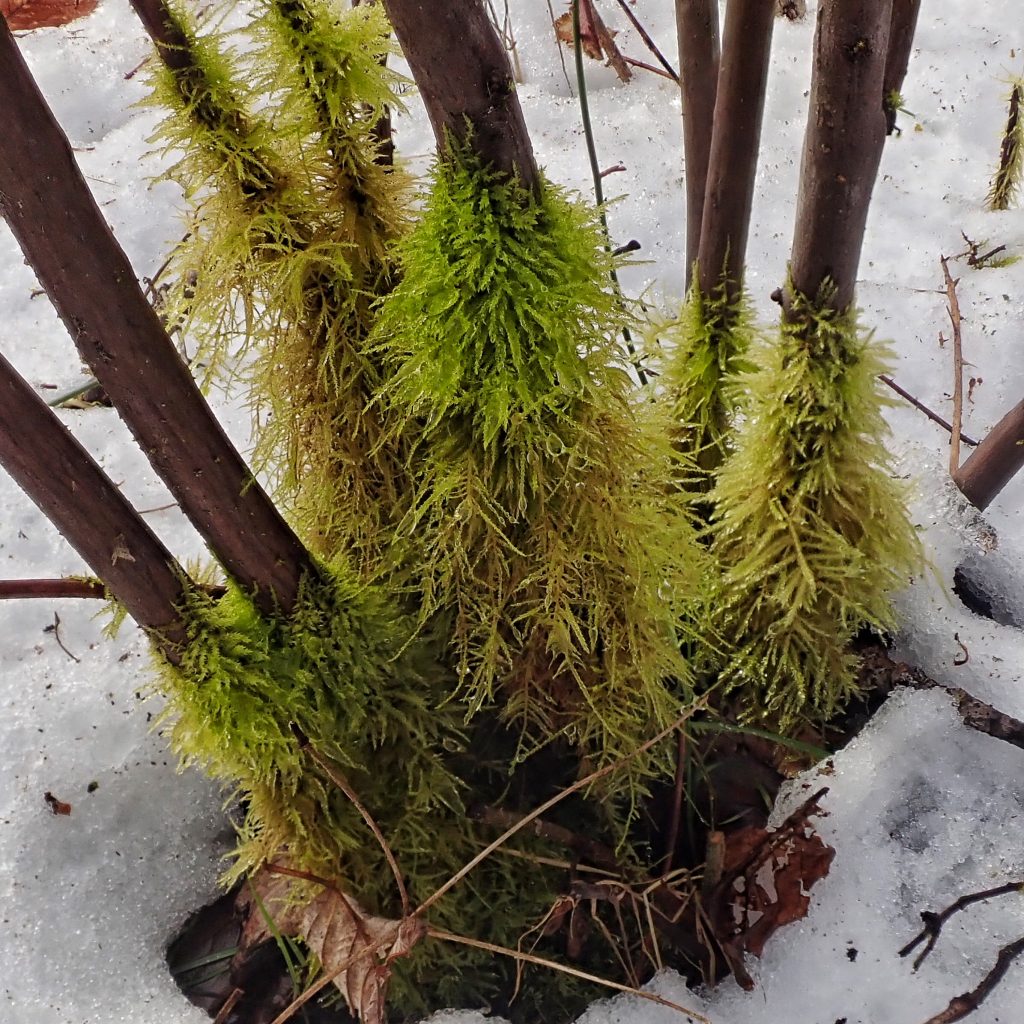
The light green moss surrounding the brown saplings, and backdropped by the bright white of the snow, was quite a pleasing sight! It was yet another time I wished I was a painter, or even a competent artistic photographer, because I would have loved to capture the feel of that combination of those colors and shapes, under moody grey skies, and the way the effect of those striking (yet not bold), contrasts seemed to embody both energy and serenity.
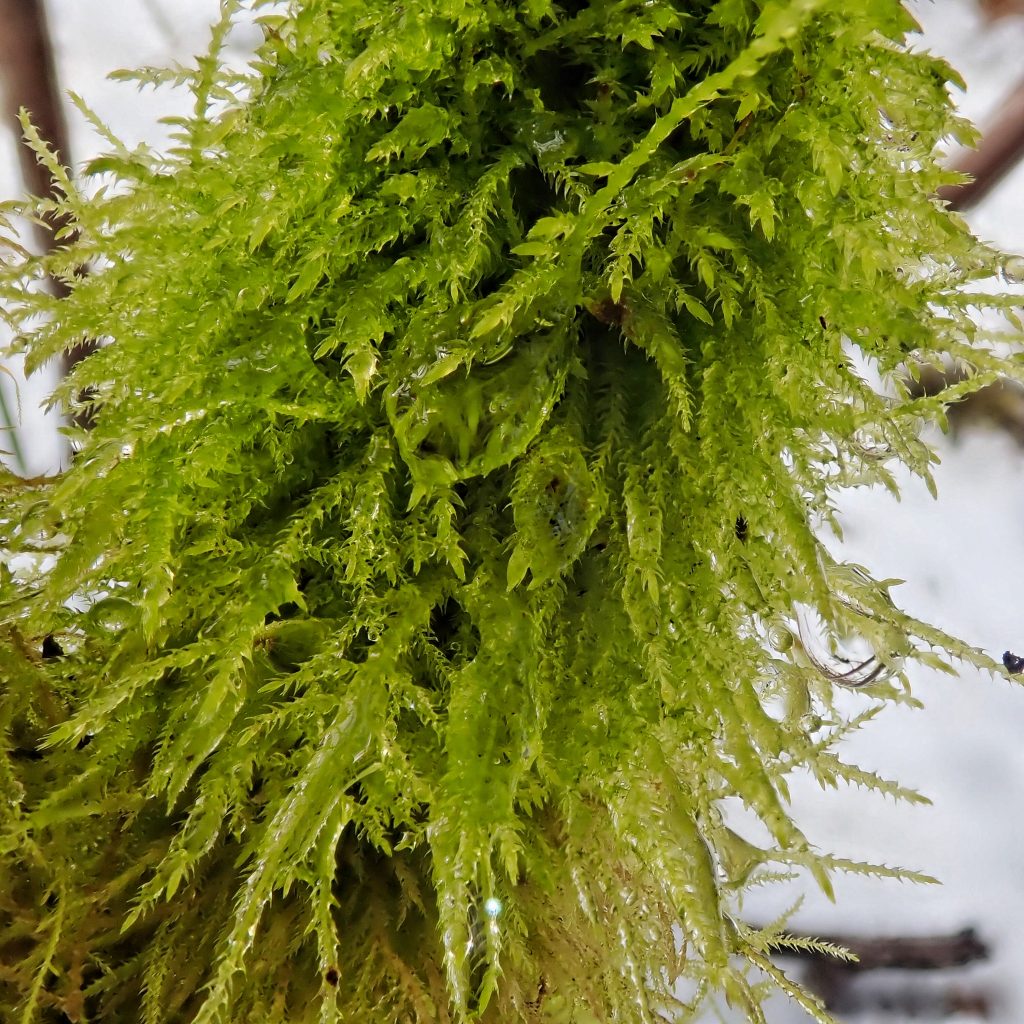
This is a common moss of the forest floors, sometimes growing right alongside its larger cousin K. oregana. But Kindbergia praelonga is more often found in wetter and more humid locations than K. oregana. It is also more scraggly and disheveled than the elegant K. oregana, the swamp rat to its cousin’s debutante persona, a survivor that can thrive in a wide variety of ecological niches.
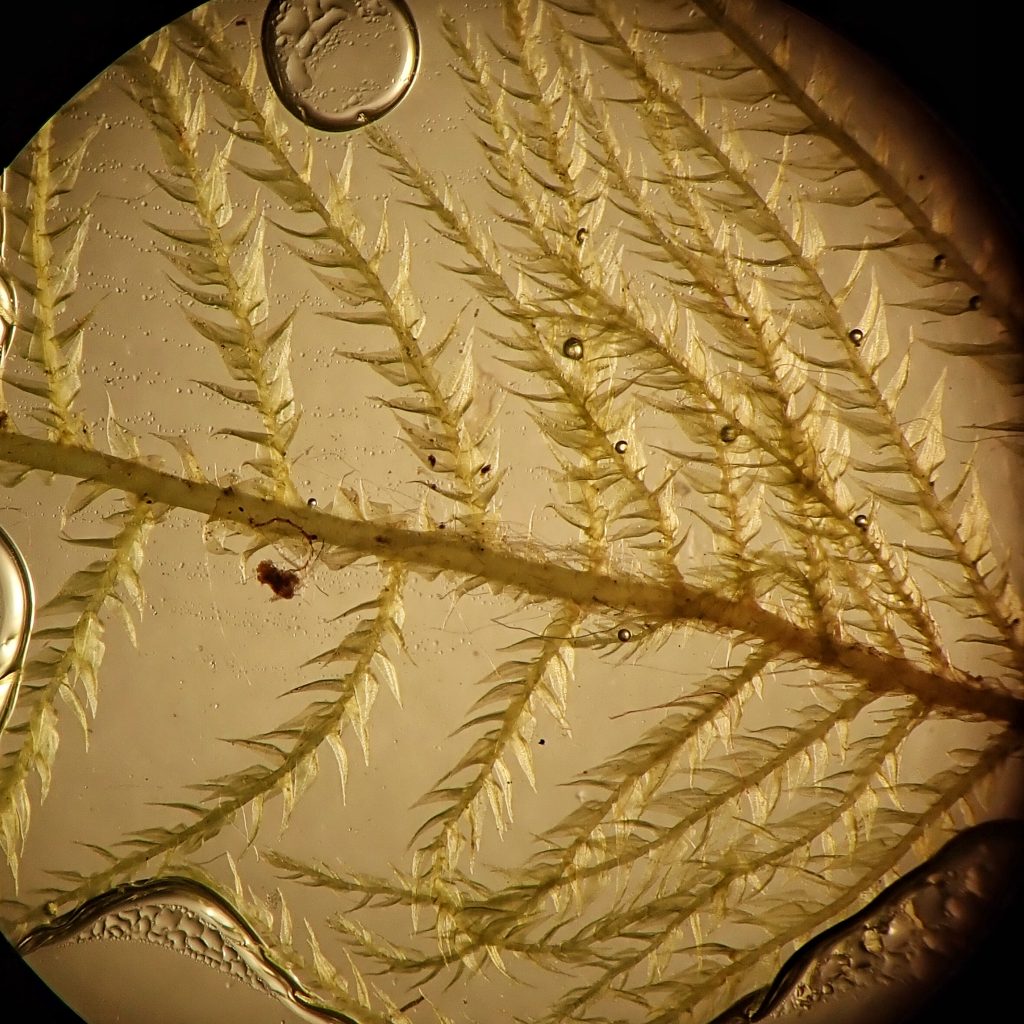
Description– Spindly and scraggly light to dark green prostrate and pleurocarpous moss that forms dense mats; shoots are pinnate to irregularly pinnate, and the apex of the shoot has a long, unbranched section; branch leaves are lanceolate and narrow gradually to a point; stem leaves are broadly triangular, keeled, and the long, thin apex is falcate; all leaves have a single, long costa, and the margins are toothed and flat.
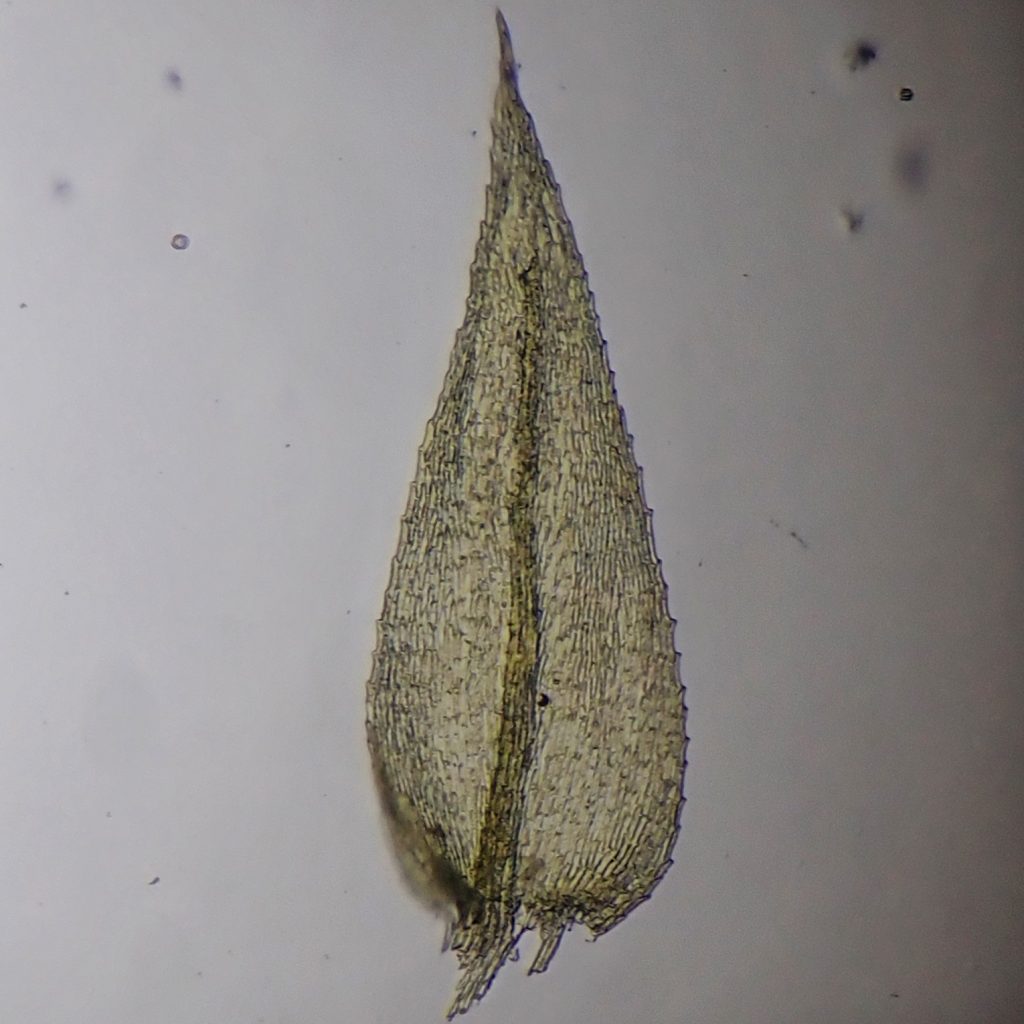
Similar species– K. oregana is larger, fuller, more evenly pinnate, and the stem leaves and branch leaves have roughly the same shape; Hypnum spp. have falcate to circinate branch leaves, and are more regularly pinnate; other feather mosses are larger, more regularly pinnate, or have julaceous branches.
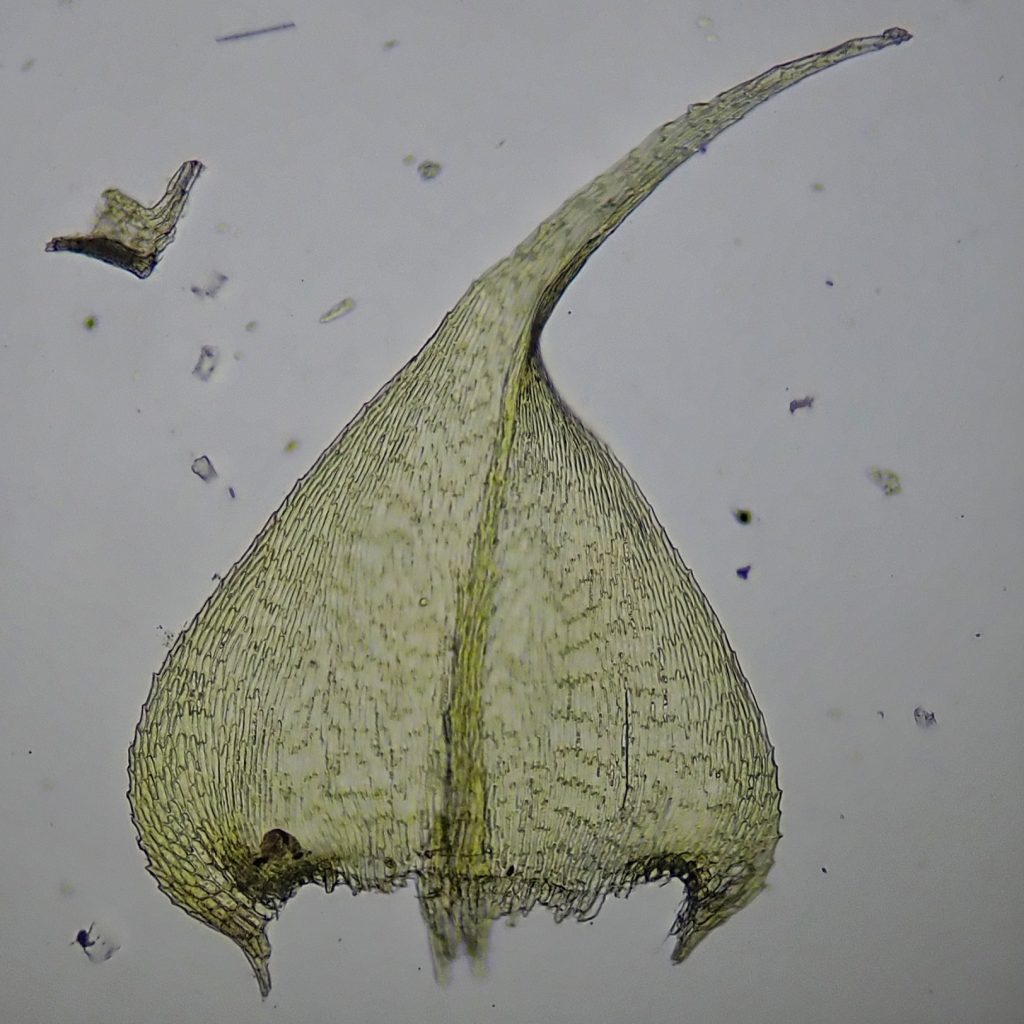
Habitat-Found on soil, humus, and rotting logs, and occasionally epiphytic on rock and tree bases; wet to mesic forests up to 7000’; also common in lawns, particularly those near wooded areas.
Range-Worldwide; most common west of the Cascades in our region, but also found in mesic forests east of the Cascades.
Reproductive timing-Spring to summer
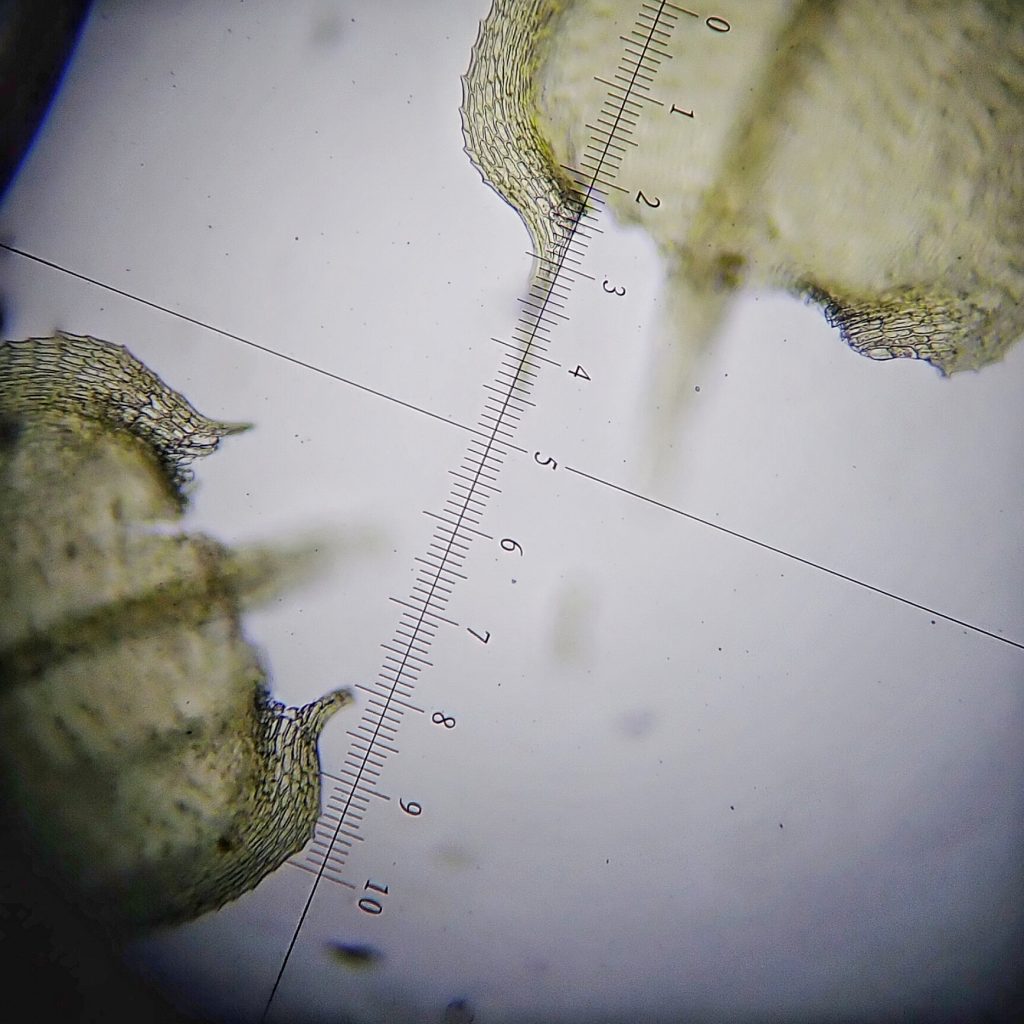
Etymology of names–Kindbergia honors Nils Conrad Kindberg (1832-1910), a noted Swedish bryologist during the last half of the 19th century. The specific epithet praelonga means ‘very long’ in Latin and may refer to the long point of the stem leaves, or to the long, unbranched apex of the shoot. Several botanical Latin enthusiasts I know tried to parse Dillenius’ (and Hedwig’s incomplete quoting of Dillenius’) description and they couldn’t say for certain either.
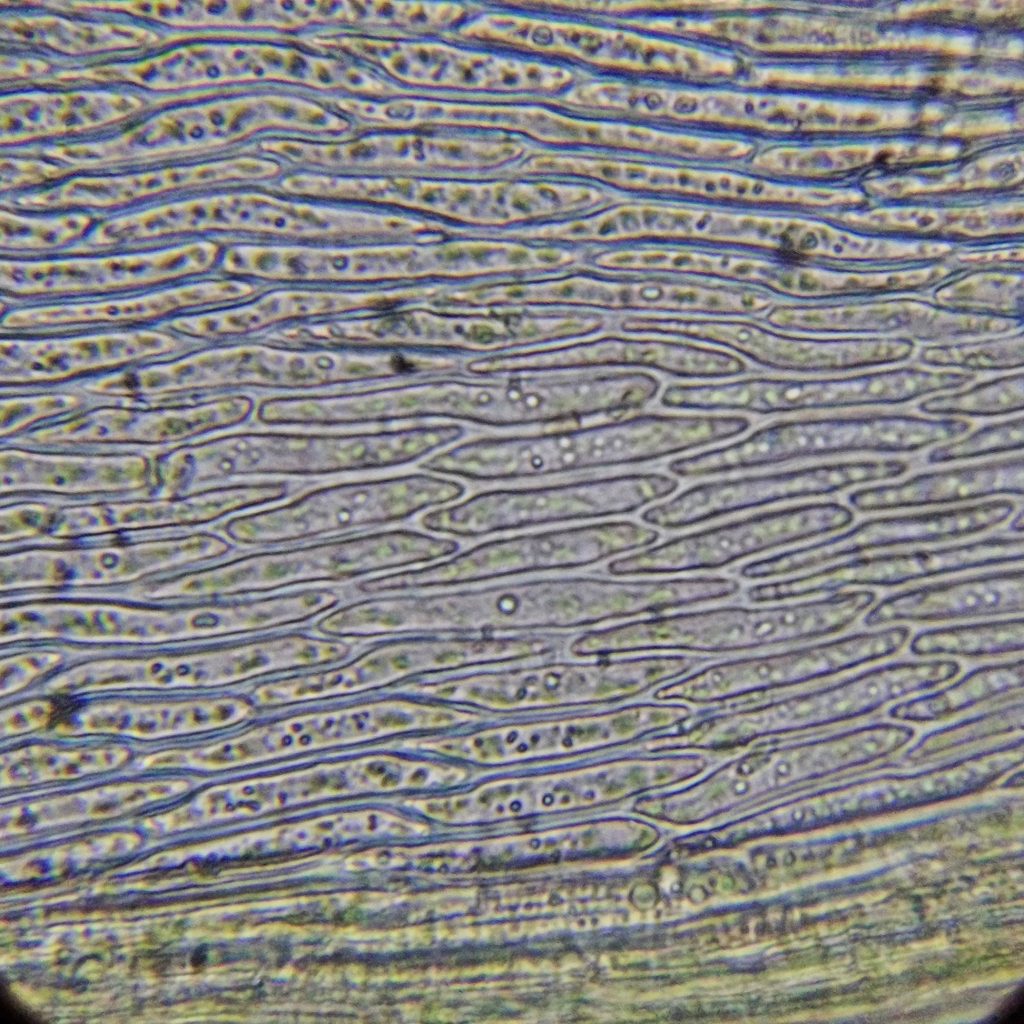
http://www.efloras.org/florataxon.aspx?flora_id=1&taxon_id=250099202
https://www.centralcoastbiodiversity.org/slender-beaked-moss-bull-eurhynchium-praelongum.html
https://websites.rbge.org.uk/bbs/Activities/mosses/Kindbergia%20praelonga.pdf
https://www.naturespot.org.uk/species/common-feather-moss
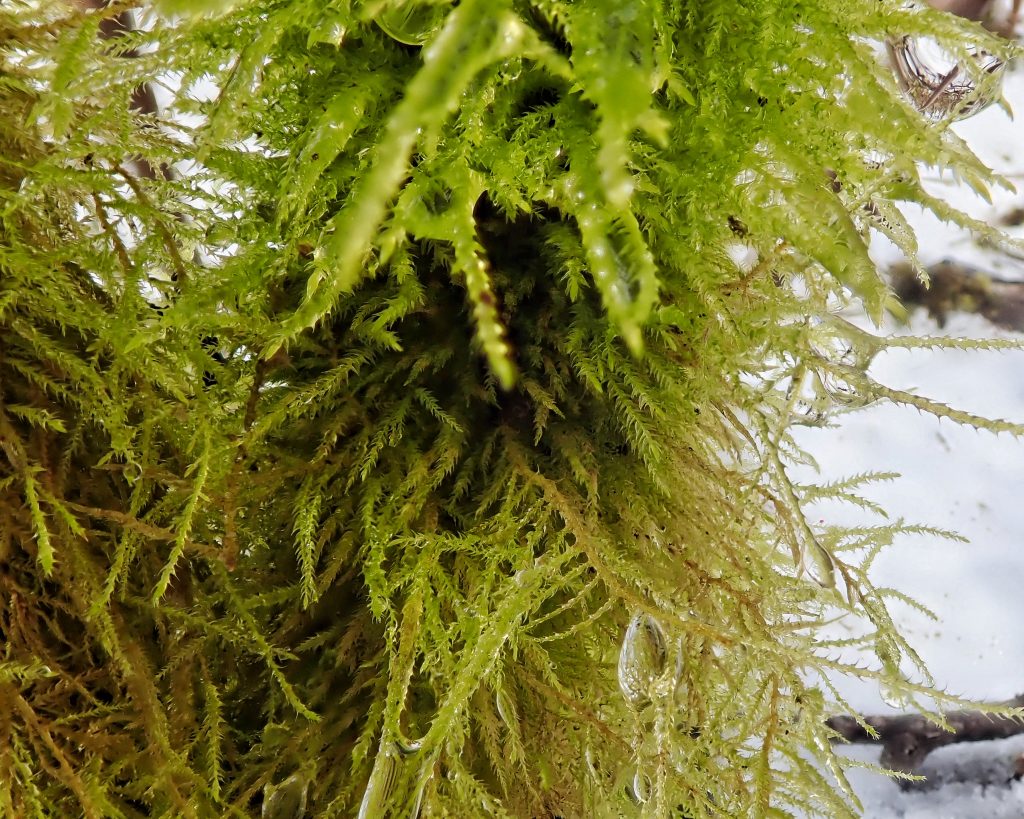
Very interesting read! Thank you ☺️